VR is becoming more popular every year, with better technology, more affordable headsets, and an expanding library of content making it increasingly appealing. However, not everyone is convinced by virtual reality yet, and I frequently get asked, is VR worth it? This article is going to talk you through my answer and I’m going to share the pros and cons of VR so you can decide whether now is the right time to jump on board. First, the short answer;
VR technology has matured sufficiently to recommend VR headsets to most people. Visual clarity, comfort, and software quality are now at a level where you should have a great experience. Standalone VR headsets, such as the Quest 2 should be considered first due to their balance between value and quality.
The question of whether virtual reality (VR) headsets are worth buying yet depends on what you are looking for in a VR headset. Let’s start by looking at the factors that may influence your decision, along with the pros and cons.
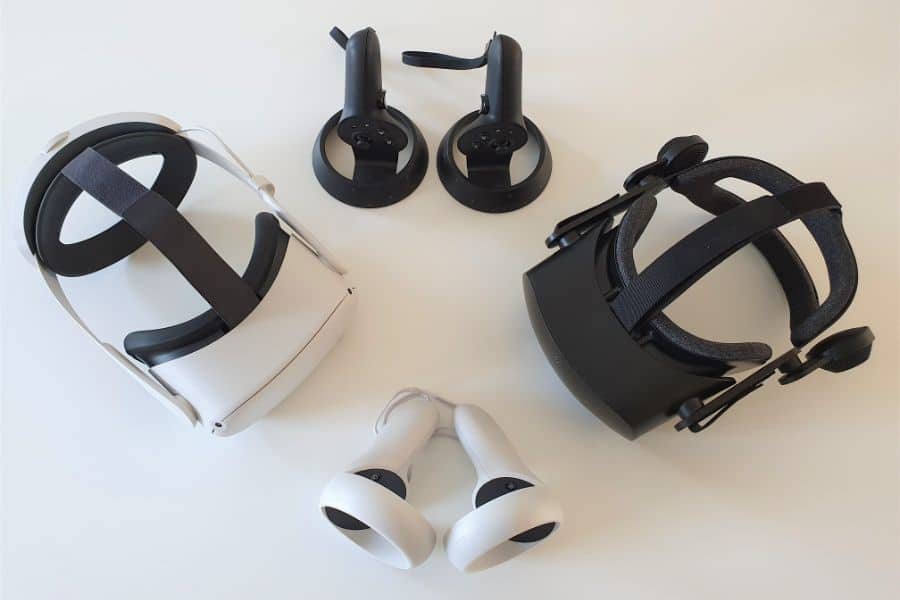
Is VR Worth It Yet?
Virtual reality has reached an inflection point where the technology is sufficiently mature, and there is a good selection of games and experiences, for me to recommend VR to most people. The gamechanger has been the rapid rise in popularity of affordable, standalone VR headsets that are simple to use and provide a great experience.
Up until recently, getting into VR required you to have a very powerful computer, a bulky VR headset, and sensors placed around your room to track your movement. The financial cost of entry, technical requirements to get it working, and lack of exceptional content meant that VR was really only for early adopters until about 2019.
VR technology has been under development for decades, much longer than many people realize, but it is only in the last few years that it has become a pleasant and immersive experience. In addition, the market has now positioned itself into two distinct segments – Standalone headsets and PC-tethered headsets.
Standalone Headsets
Standalone headsets contain all the required processing power within the headset and don’t need to be linked to a VR-ready PC. Standalone headsets are usually cheaper than PC-tethered headsets and provide good visual clarity due to high-quality lenses and displays, but lower graphical quality due to the reduced processing power available in a standalone headset.
Standalone headsets like the Meta Quest 2 and Pico Neo 3 have changed the game for the VR industry, as they provide a VR experience that far surpasses that of the very best headsets of just a few years ago, for as little as $300. The barrier to entry to VR has been significantly lowered, allowing many people to experience VR for the first time without a huge financial outlay.
The even better news is that some Standalone VR headsets can be linked to a VR-ready PC, either by cable or wirelessly, allowing you to make use of the processing power of the PC, and increasing the graphical quality of the VR experiences that you can enjoy.
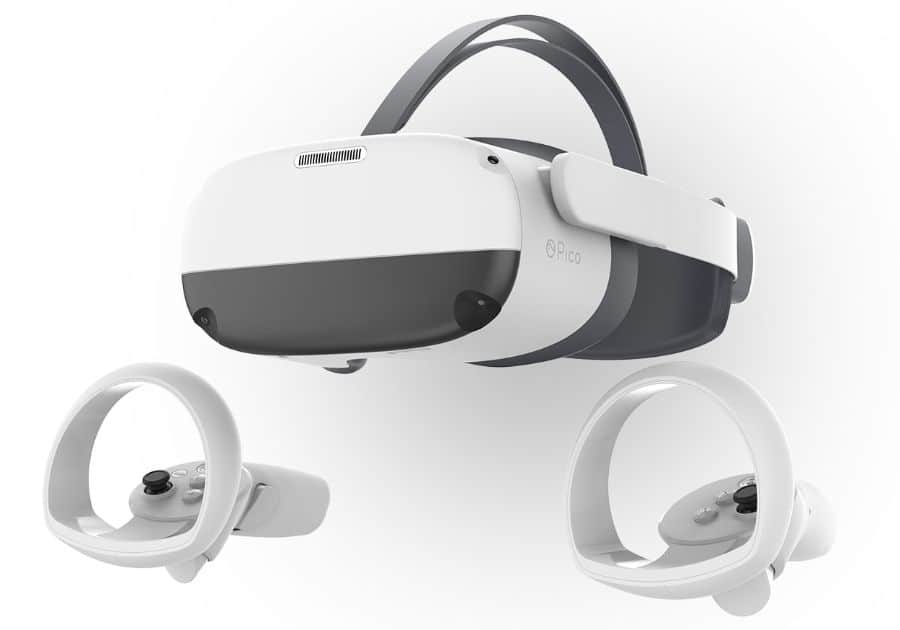
PC-Tethered VR Headsets
PC-tethered VR headsets have a physical connection to a VR-ready PC and utilize the computer’s processing power to drive the VR displays within the headset. This allows for greater graphical fidelity, and headsets are able to utilize technology and features that would be impossible for a standalone headset to use.
PC VR technology is maturing, eliminating many of the problems that held back the adoption of VR. Increased refresh rates provide a smooth experience, high pixel density panels virtually eliminate the screen door effect, and ever-increasing panel resolution provides a level of clarity that is beginning to approach the clarity of real-life human vision.
In addition, CPUs and graphics cards continue to become more powerful, enabling better graphics and performance on these headsets, while technologies such as foveated rendering and DLSS use software and hardware solutions to reduce the processing requirements to deliver a graphically impressive image to modern VR headsets.
PC VR headsets, such as the Varjo Aero are now available with incredibly high-resolution displays, eye tracking, foveated rendering, and high refresh rates that provide an unprecedented level of detail. Distant objects have a level of clarity that was simply impossible only a few years ago.
Having said this, we are just in the infancy of VR and extended reality technologies, and almost every aspect of the technology and the subsequent consumer products is going to change and improve massively over the next few years. It’s an exciting time to get into VR.
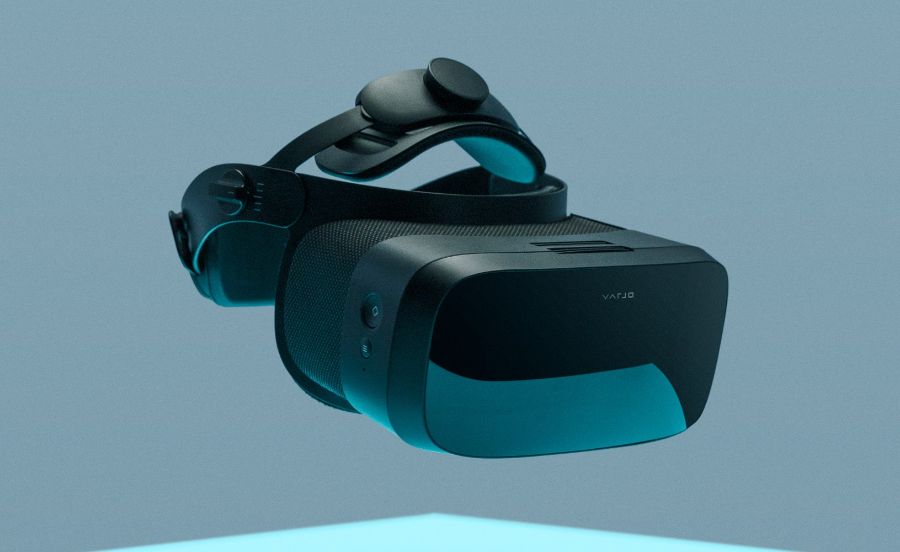
Is VR Fun?
It’s almost impossible to convey in words how VR feels, because pictures, videos, and descriptions just can’t convey what the experience feels like. All I can say is that the first time I tried VR, I was blown away by the experience. I remember smiling like a child on Christmas morning, as I enjoyed my first few moments of wonder in virtual reality.
Whilst playing a game on a computer is good, you rarely forget that you are looking at a screen, playing a game. In VR, it feels like you have stepped into the experience, you can look around, move your hands and body, and explore the environment intuitively, as you would in real life. In short, the unparalleled level of immersion that VR provides is hugely enjoyable, and far surpasses experiences on a computer monitor.
Whilst the initial wow-factor of VR will diminish with time as you get used to it, the improvement in immersion never feels different, and playing on a computer screen feels oddly antiquated after using a VR headset.
The amount of fun you can have in VR is no longer limited by the technology, but by the quality and quantity of software available. Thankfully, as VR headsets have slowly but surely increased in popularity over the last 5-6 years, the amount of quality games and experiences has increased dramatically. I now feel that there is enough on offer that you are never going to run out of things to do.
Reasons Why VR Is Worth It
In general, I feel that now is a great time to be getting into VR, and there are a few reasons why I feel it is worth it.
1. Greater Immersion
VR provides a much greater level of immersion than watching or playing something on a screen. Having the experience filling your field of view, and being able to move your head and body to look and move around the virtual environment in a natural way is like nothing you can experience elsewhere.
VR isn’t just a different screen to watch, but an entirely new way of interacting with virtual environments.
2. VR Is Ready For Mainstream Adoption
VR technology has hit an inflection point where it is ready for mainstream adoption. The display and lens technology provides good visual clarity, and the range of software available means there are plenty of options for everyone.
Lens technology has progressed at a rapid pace, ensuring a clear picture throughout your field of view, without distortion of the image you are looking at.
Display technology for VR headsets has also reached the point where they provide a great experience, with huge leaps in the resolution, pixel density, and brightness of modern displays, all combining to provide crystal-clear images in modern VR headsets.
If the thought of being an early adopter has put you off in the past, I can confidently say that as long as you opt for a modern headset, that has been launched in the last 1-2 years, you will have a fantastic experience.
VR headset sales are growing extremely rapidly, and with this, the amount of software and VR experiences on offer is growing quickly. VR headset sales grew 92%, to 11.2 million in 2021, and are forecast to grow to 50 million per year by 2025.
3. VR Content Is Awesome
The amount of quality VR software available has expanded rapidly over the last few years and there is now no shortage of quality VR experiences. From games such as Beat Saber, VRChat, and Blade & Sorcery, to watching 360-degree videos, or watching movies on enormous virtual screens, there are tons of options.
You can go on VR museum tours, watch live sports, explore Google Earth VR, try your hand at painting, or play sports such as bowling, golf, boxing, and more.
With such rapid growth in the number of people with VR headsets, the amount of content and experiences that are being developed is enormous and bodes extremely well for the future of VR.
Personally, I can’t wait to be able to go to more live events in VR. Imagine being able to watch live sports from the comfort of your own home while feeling like you’re sitting in the stands, or getting a front-row seat to see your favorite band.
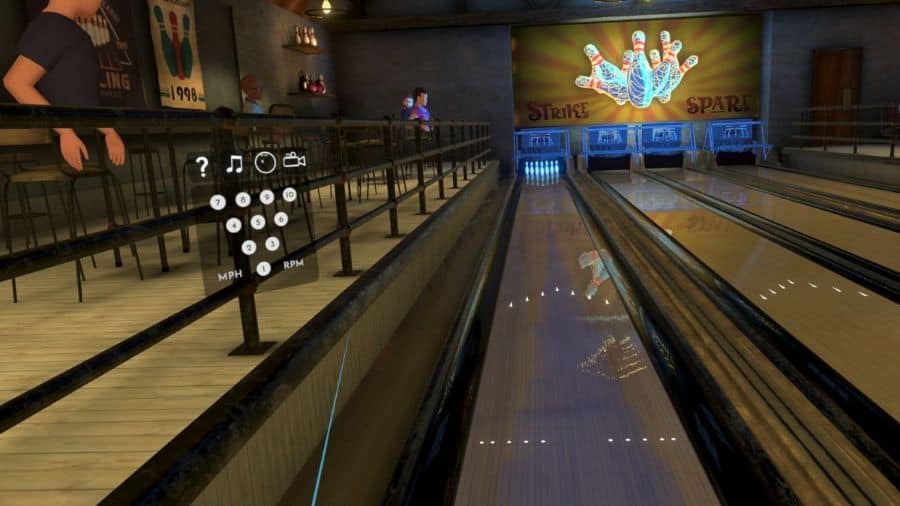
4. Standalone VR Headsets Provide Great Value
Standalone VR headsets have massively accelerated the adoption of VR, and are a great way to try VR at a reasonable cost. For as little as $300, you can get an excellent VR headset that allows you to enjoy the full gamut of VR experiences.
Even 2 years ago, to get the same experience you can get with a modern standalone headset, you would have had to invest thousands of dollars into a powerful PC and headset. This means that the entry cost of VR has reduced from several thousand dollars to several hundred dollars within just a few years.
5. VR Is Great Exercise
The ability to exercise while enjoying yourself is another thing that makes VR worth it. There are so many VR games and experiences that require you to stand up and move around. The level of physical exertion is completely up to you, but there are plenty of options if you want a full workout.
Due to spending a lot of time in VR, where I would previously have been sitting at a computer, I’ve lost weight and become fitter and healthier without feeling like I’ve made much of a lifestyle change.
You can take part in yoga, energetic rhythm games, a range of sports, or enjoy 360-degree workout videos, all while enjoying a leisure activity that feels a long way from hard work.
Reasons Why VR Is Not Worth It
Although there are a lot of compelling reasons to get a VR headset today, there are still quite a number of challenges and shortcomings that may make you decide to avoid VR for now.
1. Rapidly Developing Technology
The technology has only just reached a point where it provides a good experience, and there are likely to be rapid improvements in the technology over the next few years. This will lead to VR headsets that are far superior to those we use today.
If you compare VR headsets released in the last 1-2 years to those that were released 5 years ago, there is a stark difference in the technology and quality of experience, and it will likely be the same in another few years.
Whilst any headset you buy today should give you many years of enjoyment, it will be superseded within 1-2 years by better headsets. It’s important to be aware of this fact and make a decision on whether it is better to spend money now and enjoy what is available or wait for the next cutting-edge headset.
2. Visual Clarity
The visual clarity of modern VR headsets is not perfect but is much better than it was in the recent past. The resolution of VR headsets is still far below the clarity of normal human vision, and whilst it is perfectly acceptable for most uses, seeing fine detail and reading text at distance is still below what is possible in real life.
To put this in perspective, the best mainstream headsets have a resolution of about 20 pixels for each degree of your field of view in VR. A human with 20/20 vision can theoretically resolve two lines as being distinct at a resolution of at least 120-150 pixels per degree of vision, so there is some way to go before visual clarity is as good as normal vision.
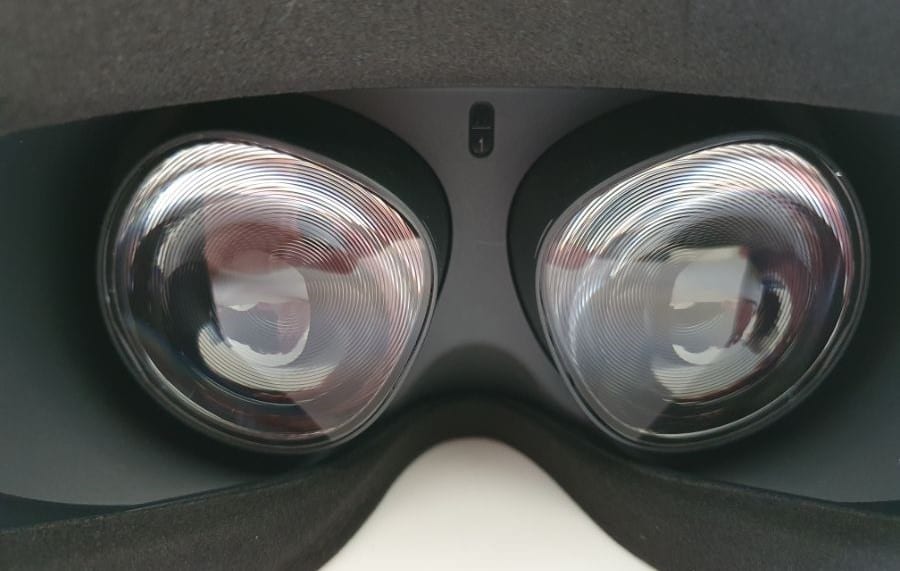
3. Vergence-Accommodation Conflict (VAC)
Vergence-Accommodation Conflict (VAC) is a problem that can cause eye strain and headaches for some people in VR, and it is due to the inability of current VR headsets to simulate the normal accommodation and vergence mechanisms of your eyes.
Normally, when you want to focus on an object, your eyes move to look at that object (vergence), and the lenses of your eyes adjust to focus the light coming from that object on the back of your eye (accommodation).
In VR, when looking at an object in the distance, your eyes need to accommodate to focus on a screen that is only inches from your eyes. This mismatch in where the image appears optically, and what your eyes and brain must do in reality can result in eye strain, and blurring of the object, as your eyes struggle to adapt.
Whilst your brain is able to decouple vergence and accommodation, it takes longer and is more difficult for your brain. Some people have minimal issues with this, whereas some people find VR headsets to cause eye strain quite quickly. There are a number of technologies being actively developed to mitigate or resolve this issue, but it is likely to be a few years before they are widely used in VR headsets.
4. Lack Of Connection With The World
When using a VR headset, you are largely cut off from the outside world. It’s harder to respond to someone outside of VR, and you usually have to take your headset off if you want to do something as simple as having a drink or checking your phone.
Part of this is due to the focus of current headsets on VR, rather than including augmented reality (AR) and other extended reality technologies, that use external cameras to allow you to see the outside world and superimpose virtual objects onto the real world.
The bulky nature of current VR headsets is another issue that restricts your connection with the outside world. This will slowly be addressed as new headsets get smaller, lighter, and more comfortable, and allow you to retain more of a connection to the outside world if desired.
The medium-term goal will be to have combined VR and AR headsets that look closer to a pair of bulky glasses, rather than a large box strapped to your face. I expect that the next few years will see big improvements in this area, so if you do decide to hold off a bit longer, I don’t think you’ll have long to wait before smaller headsets that incorporate VR and AR become commonplace.
Standalone VR Headsets VS PC-Tethered VR Headsets
For most people looking for an entry point into VR, a standalone headset such as the Quest 2 or Pico Neo 3 is the best option, as these provide a cost-effective, quality VR experience. You can also link these headsets up to a VR-capable computer to enjoy all the benefits of PC VR.
However, if you are a VR enthusiast, the very best VR experiences are still to be found with a PC VR headset. You will find greater clarity, higher FOVs, and more cutting-edge features in a PC VR headset. Controller and body tracking are still better with external base stations than headsets that use inside-out tracking methods.
Personally, I currently use an HP Reverb G2 and a Meta Quest 2. The Reverb G2 is slightly better in most areas, but I actually use the Quest 2 at least as much as my Reverb G2, due to the user-friendly hardware and software.
Is Quest 2 Worth It?
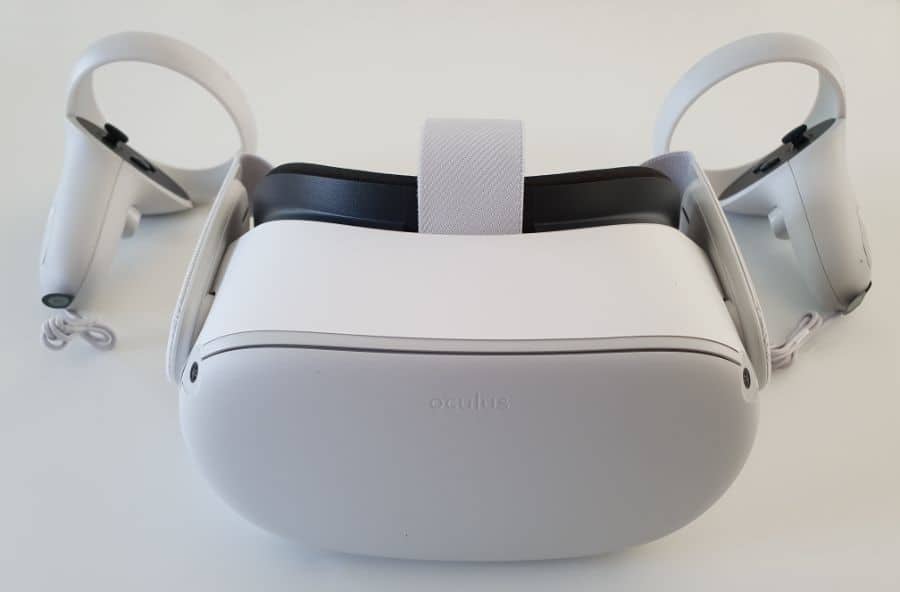
Since its release in October 2020, the Quest 2 has gone on to sell over 10 million units, and with the combination of good visuals, affordable pricing, and a growing library of content, I think the Quest 2 is definitely worth buying.
The Quest 2 currently accounts for more than 75% of all VR headsets sold, so if you want to buy a VR headset, you should seriously consider the Quest 2 as one of the main contenders. The Quest 2 has a display resolution of 1832×1920 per eye resolution, and a refresh rate of up to 120 Hz, providing a smooth and clear experience that fully showcases what VR can do.
Should I Wait For The Quest 3?
It is likely that the Quest 3 will release in 2023, and will be a significant upgrade in most areas. As with all technology products, you will always have the option to wait for a better product in the future, but you have to weigh that up with the reality of postponing your introduction to VR.
What Is The Best VR Headset?
As of 2022, I consider the following to be the best VR headsets;
- Meta Quest 2 – This is the best VR headset for most people. This standalone headset is excellent value, has good visuals, and has an excellent library of software.
- HP Reverb G2 – Best PC-tethered VR headset for simulation racing and flight sim fans. Terrific visual clarity, 114-degree FOV, and inside-out tracking.
- Valve Index – One of the best general-purpose PC VR headsets. 130-degree FOV, comfortable, and good visual clarity. External tracking increases complexity but provides the best tracking solution.
- Varjo Aero – Best high-end consumer headset. Unparalleled clarity, but high price, and requires external tracking.
Why Is VR Not Popular?
The popularity of VR headsets has grown steadily for about the last 7-8 years, and the lack of rapid growth initially was largely due to the limitations of VR technology, and the lack of VR software. Both combined to discourage consumers from buying VR headsets and developers from making VR software.
This situation has changed dramatically over the last 2 to 3 years, with VR headset sales growing rapidly as the technology has matured, costs have reduced, and the amount of VR software available has grown exponentially. Sales of VR headsets are forecast to grow from 11.2 million in 2021 to 50 million in 2025.
So After All That, Is VR Worth It?
I’ve tried to keep this article as balanced as possible, but obviously, I’m a VR enthusiast that really does feel VR is here to stay. Regardless of whether you decide to give VR a go or not, I hope you’ve enjoyed this article, and have a better understanding of the pros and cons of VR, so you are better placed to make your decision.
